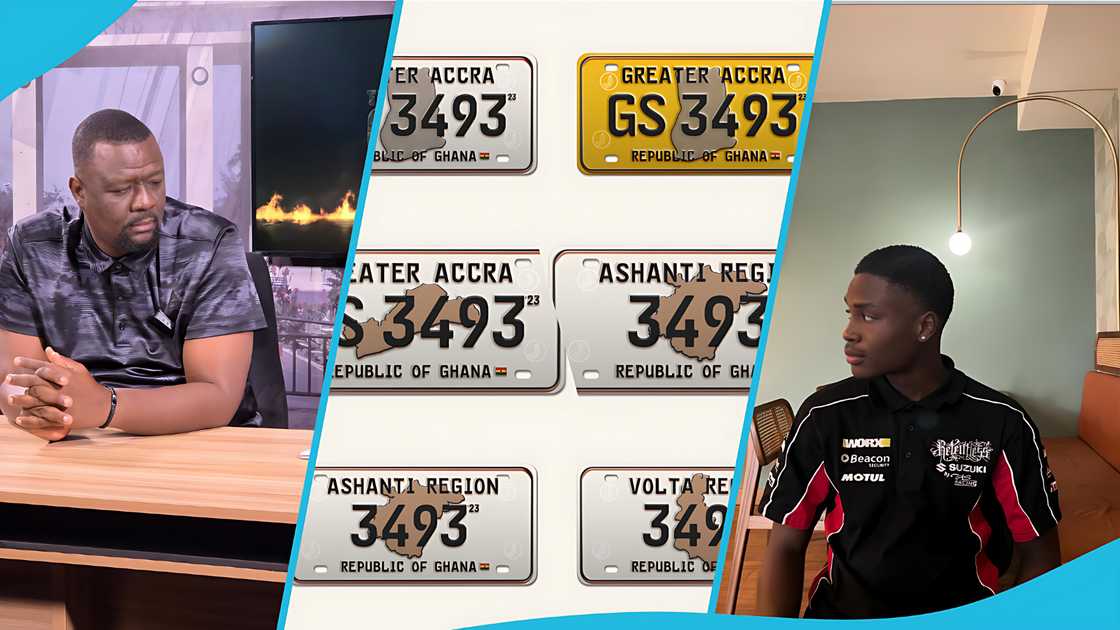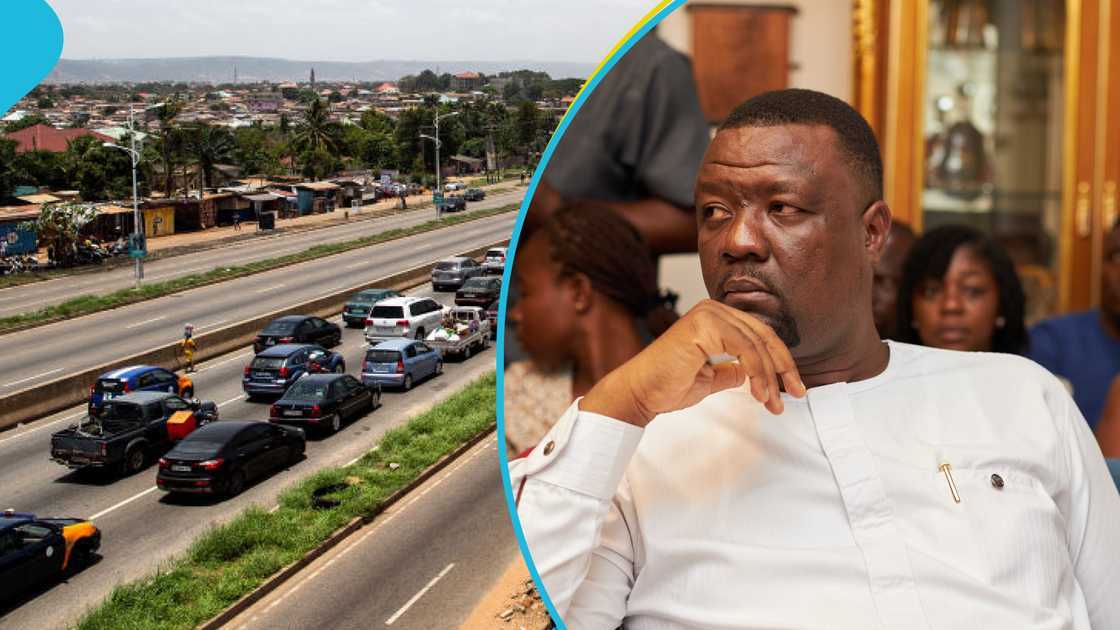- The DVLA has announced a new number plate system to begin in 2026, replacing the year stamp with zonal and regional identifiers
- Ghanaian graphic designer Jason Fakor Fiam-Coblavie went viral after sharing creative mock-ups of number plates that featured Ghana’s map and regional outlines
- Jason’s designs, which he says were partly inspired by America’s Virginia plates, bear a striking resemblance to the DVLA’s showcased samples, raising eyebrows
The Driver and Vehicle Licensing Authority (DVLA) has officially announced that Ghana will adopt a new number plate format beginning in 2026.

Source: Twitter
Unlike the current system, where the year of registration is boldly printed on plates, the updated design will do away with this feature entirely.
Instead, the new format will carry zonal and regional identifiers, making it easier to track and authenticate vehicles nationwide.
The announcement sparked widespread discussions among Ghanaians, with many wondering what the new plates might look like and sharing personal suggestions online.
This public curiosity was further fueled when the new DVLA boss, Julius Neequaye Kotey, explained that the change was part of a broader modernisation plan.
Clamping down on fraud
According to Julius Kotey, Ghana’s vehicle registration system is being upgraded to improve traceability, reduce fraud and misuse, and bring the country in line with global best practices.
The introduction of embedded smart chips and regional codes will make it harder for criminals to manipulate plates and will also help law enforcement identify vehicles more effectively.
Ghanaian designer’s concept sparks talks over plates
Amidst these conversations, a Ghanaian graphic designer, Jason Fakor Fiam-Coblavie, became the talk of social media after sharing his creative mock-ups of what the 2026 number plates could look like.
His work quickly went viral, drawing admiration from thousands of people.
Many described his designs as modern, elegant, and patriotic, while others called on the DVLA to adopt them officially.
In Jason’s concept, one of the standout features was the subtle outline of the map of Ghana placed in the background of the registration number.
This gave the plates a distinct national identity while maintaining readability.
In another version, he included the individual maps of Ghana’s regions, offering a unique way to highlight cultural diversity within the country.
Both designs were praised not only for their beauty but also for their functionality, as they made the plates instantly recognizable as Ghanaian.
The buzz around his work shows how deeply Ghanaians care about this transition and how design can play a role in shaping national pride.
Whether or not DVLA will consider public suggestions like Jason’s remains to be seen, but one thing is clear: the upcoming change has captured the imagination of the nation, blending innovation with creativity in ways that go beyond just vehicle identification.
In the new number plates showcased by Metro TV during an interview with Julius Neequaye Kotey, the design displayed bore a striking resemblance to that of Jason’s work, raising questions about whether the DVLA had taken inspiration from him.
Jason explains inspiration behind number plate designs
YEN.com.gh had an interaction with the trending graphic designer, Jason Fakor Fiam-Coblavie, to ask some of the questions the public had been raising, and he provided answers.
When asked what inspired him to redesign Ghana’s number plate and why he chose to do it now, he responded:
“I noticed that our number plate looked a bit too dull, so I decided to redesign it while keeping a minimal appearance. This was back in 2023, when I was still new in the graphic design field.”
Jason was also asked about the key elements in his design, such as the central map of Ghana and the font style.
He explained that the plates have each region of Ghana on them, showing where the car was registered, while maintaining the original font.
Many wondered where he drew his inspiration from, especially considering how he thought outside the box and created a unique design.
When asked whether it was influenced by international license plate styles or purely Ghanaian symbols, he stated that he was heavily swayed by Virginia’s style, the American State.
The biggest question was whether any official body or government representative had contacted him, given that the sample plate shared by DVLA looked very similar to his.
“I haven’t, even though I sent the samples to them via email and Instagram.”
Nonetheless, he disclosed that he would be happy to work with the government since the larger goal is to make Ghanaian transportation better.
“I’d be more than happy to work with them.”
Jason Fakor Fiam-Coblavie, the talented graphic designer, remains optimistic about his work and holds high hopes for the future.

Source: Facebook
DVLA unveils new number plates with RFID
Previously, YEN.com.gh reported that DVLA boss Julius Neequaye Kotey unveiled new number plates set for January 2026 as part of reforms to modernise Ghana’s vehicle registration system.
The plates will include RFID chips, reflective features, and digital links to a central database to boost tracking, cut fraud, and improve road safety.
Year stamps will be replaced with regional and area codes, and special plates at a premium may be issued for late registrations.
Proofreading by Samuel Gitonga, copy editor at YEN.com.gh.
Source: YEN.com.gh
Source: Yen.com.gh










